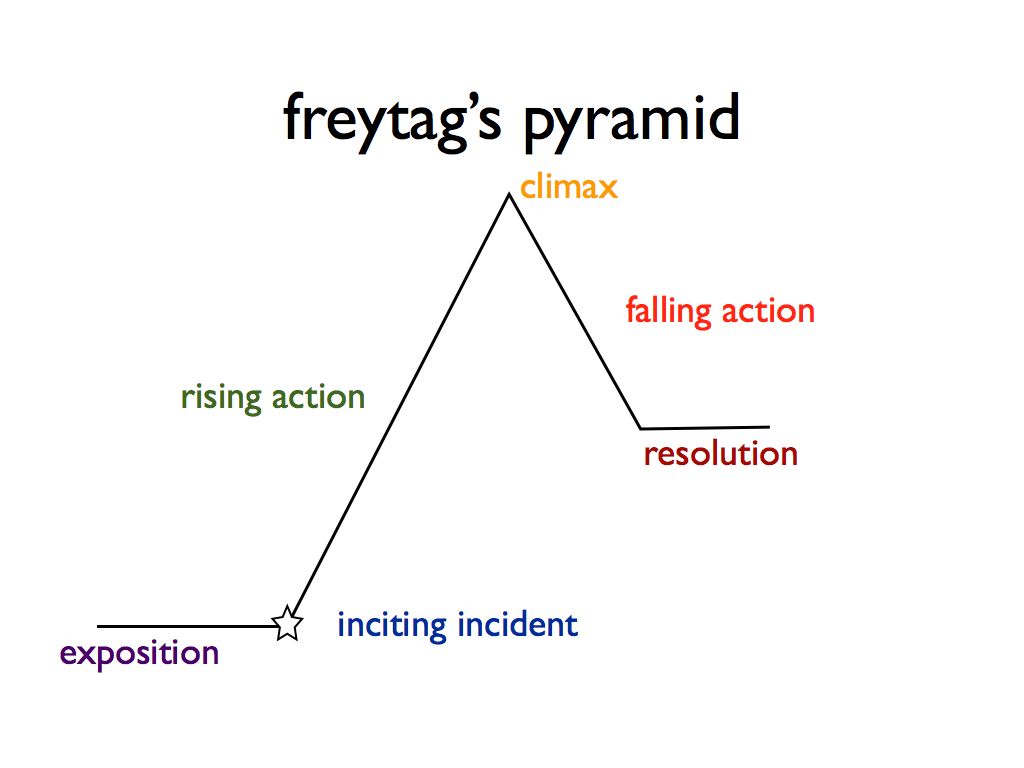I have a question for you. When was the last time you sat down, pulled out your phone or magazine, read a feature journalism piece and thought to yourself, “Wow! This is a great story.” If you’re a journalist, how often do you think your readers react that way with your pieces?
Stories are meant to be read.The right grammer, the right sentence structures, reliable sources and the relevance of your story: all this could be in vain if there isn’t that wow-factor to glue it all together.
“I believe everybody has a story worth telling, but precious few know how to get it down on paper.”
Oprah Winfrey
The art of storytelling plays a significant role in conveying information not only effectively, but also in a manner that engages the reader from start to finish. And like with every good writing, journalism has to embrace good storytelling, for it to be impactful.
In this article, we are going to see how you can adapt the Freytag’s Pyramid model of storytelling in your journalism stories. So let’s get to learning, and let’s get your readers hooked!
What Is The Freytag’s Pyramid?
I’m glad you asked!
The Freytag’s Pyramid is a five-part narrative structure that traces the rise and fall of tension in a story. Originally it was developed to analyze dramatic narratives, but to this day it has proven to be useful to storytellers, even in those early stages of preparing story outlines. Let’s explore each part of the Freytag’s Pyramid individually:
Exposition
The exposition sets the stage. It lays the groundwork for the story, offering essential background information and context to readers. Who is the story about? What do they want? Where is the story taking place? These are the things a reader should be able to understand from this part of the narrative.
Rising Action
Remember when we introduced the main character’s motive in the Exposition? Well, in the Rising Action, the narrative progresses with rising tension and conflicts. The stakes keep getting higher and higher. Our main character faces a number of roadblocks in their quest to get what they want.
Climax
This is the turning point where tension reaches its peak, and therefore, the main character changes their perception of their quest: whether it is for better or for worse. Which also means the turning point to the story themes and ideas. The climax foreshadows the fate of our main character. And the central conflict is addressed in a way that can’t be undone.
Falling Action
How does the character react to the irreversible changes made by the climax? In the Falling Action, we explore this aftermath. Do new conflicts arise as the result of the climax? While this part of the narrative addresses all these things, loose ends of the story must also be tied to push the story forward to some sort of resolution. The Falling Action drives the story to a new normal that is different from how and when the story started.
Resolution
Maybe the protagonist dies. Maybe the antagonist escapes. Maybe they reconcile. However you decide to end the story, it must leave readers with not only a lasting impression, but a lasting impression that remains true and logical to the preceding narrative. This is the closing scene that gives readers something to ponder on.

You might now be replaying some of your favorite fiction stories at the back of your mind and analyzing them…
So, I’ll give you a moment!
I know what you’re thinking. This is a cool storytelling model, but how can it possibly apply to let’s say feature journalism, or Investigative journalism, or Opinion Journalism? Well, allow me to show you how.
Applying Freytag’s Pyramid to Journalism
Imagine the five narrative parts of the Freytag’s Pyramid on a see-through paper that is on top of a journalism piece. This is how it can guide you:
Write Engaging Introductions
By employing an engaging exposition, you can grab readers’ attention from the very beginning. Introduce characters or present the problem with compelling language that intrigues readers. Again, who is this story about? Where and when is this story taking place? What even is the story? Make readers care enough to want to know more.
“On the most basic level, readers read to find out what will happen next. It’s like making a person scratch long and hard; before she’ll do that, she needs to feel an itch.”
Nancy Kress, novelist and short story writer
Build Tension
In journalism, this stage involves presenting facts, evidence, and different perspectives on the problem at hand. Gradually introduce conflicts and relevant information, maintaining a steady pace of rising action. Just like in dramatic narratives, building tension in journalism stories keeps readers hooked.
Make Powerful Reveals
The climax in journalism stories is the moment of truth. This is when you get to put your detective hat on and unearth surprising facts or present an unexpected perspective that will create a lasting impact on readers. Just like the climax in dramatic narratives, this the pivotal moment. It exposes the crux of the matter, offering a powerful revelation or uncovering a significant truth.
Contextualize The Information
So, you have made your powerful reveals. Now what?
The next step is to provide additional context and background to help readers understand the broader implications of the story’s revelations. This stage delves into the consequences, and reactions to the Powerful Reveals.
Resonant Conclusions
A strong resolution in journalism leaves readers with something to think about. Whether it’s a compelling call to action or a thought-provoking reflection, it leaves a lasting impact. A lesson. A message that lingers on months or even years after reading.
In a heap of generic journalism content we see today, what the Freytag’s Pyramid offers, is a valuable framework for crafting compelling and impactful stories. A skill to stand out. A chance to engage readers, shed light on critical issues, and leave a lasting impression. An opportunity to elevate the quality and effectiveness of journalism stories, resonating with audiences and making a difference in the world of media.
“The beginning isn’t simply the first in a series of events, but the originating event of all that follows. The middle isn’t just the next event, but the story’s central struggle. And the ending isn’t just the last event, but the culminating event.”
Steven James, author and writer
Cover image courtesy of Pexels.


Interesting! We were always taught to follow a beat and get to the heart of the “story” ASAP in our articles. But this makes for a more human and exciting read. Thanks!